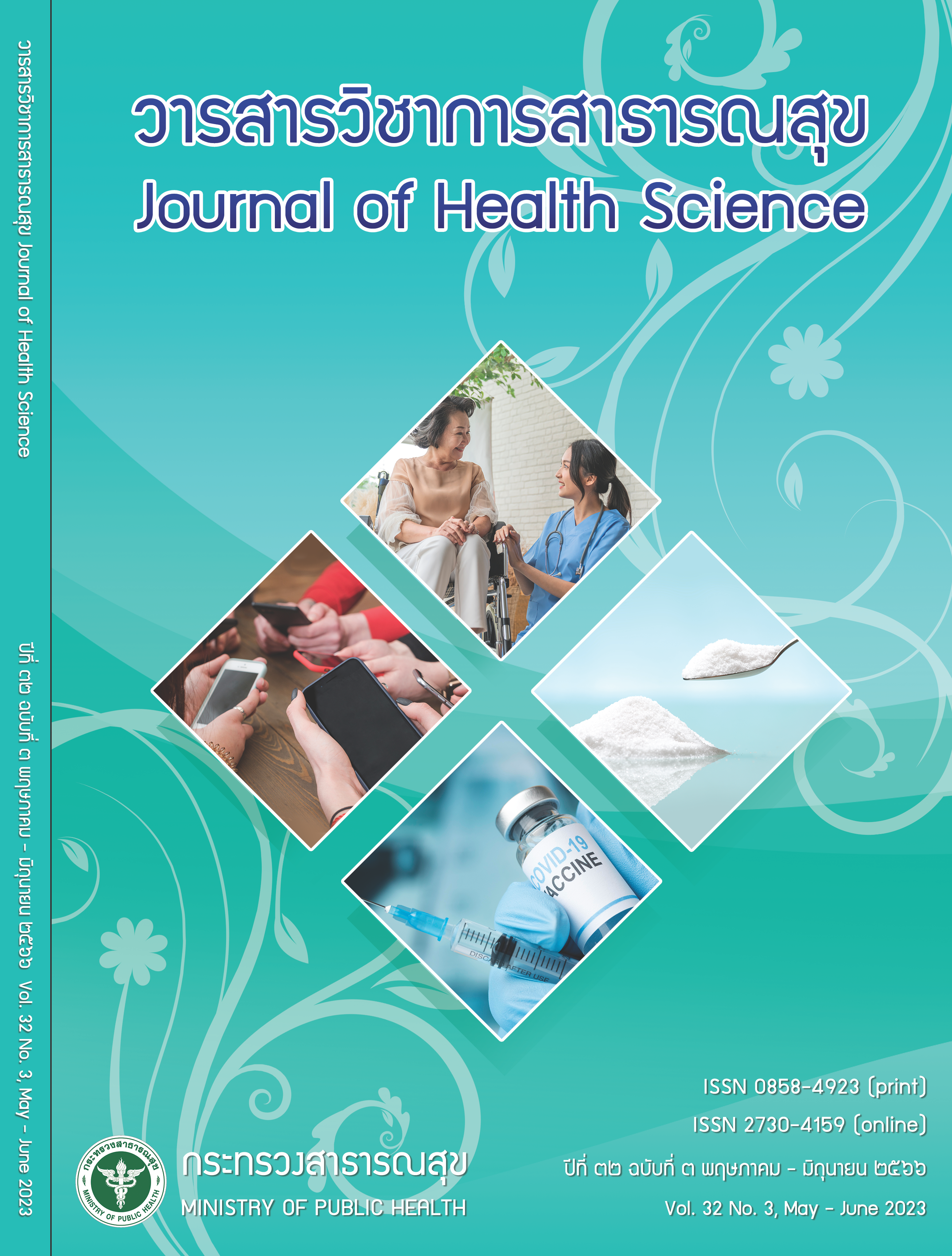Developing a Model for Auditing and Evaluating the Internal Control System of Agencies of the Ministry of Public Health
Abstract
The purposes of this study were to investigate the problems and obstacles in internal control audit and assessment system, and to assess the efficiency of the utilization of the digital technology in internal control audit and assessment system of agencies of the Ministry of Public Health. The study was conducted in qualitative and quantitative aspects. Interviews were conducted by focusing on the problems and obstacles in internal control audit and assessment. A set of questionnaires was used to collect data in order to assess satisfaction in the efficiency of the utilization of the digital technology in internal control audit and assessment system. The findings of this study were as follow: (A) there were two problems and obstacles in the audit of yearly plan: (1) the finance was high for few audited agencies; and (2) self-assessment: the submission of paper and e-mail assessment results revealed difficulties and complexities of paper collection, data evaluation, scoring, late submission of documents, unable be verified evidence, unsearched for the root causes of the risk, and too many documents to storage that brought about cumbersome and delayed in document search; the Google form submission was just onc time act, and could not re-submit anymore, unable to verify the evidence, unreal scoring, and unable be verified root causes of the risk. (B) The effectiveness of utilizing information technology in internal control audit and assessment on the year 2022 was better than that of the year 2021; and the set goals were achieved, of which the percentage of departments receiving evaluation had increased by 11.68%. The percentage of departments met the evaluation criteria, with the increase of 17.74%. Moreover, it was found that both groups of users were satisfied with the performance at the highest level (Mean = 4.36 and SD = 0.649), in which the user group satisfaction was at a high level (Mean = 4.14 and SD = 0.701), and that of the internal auditors group was at the highest level of performance satisfaction (Mean = 4.58 and SD = 0.596).
Downloads
References
กระทรวงสาธารณสุข. หนังสือสำนักงานปลัดกระทรวง สาธารณสุข เรื่อง ขอส่งเอกสารการจัดวางระบบการควบคุม ภายใน. เลขที่ สธ 0215.01/ว 2551 (ลงวันที่ 31 มกราคม 2562).
กระทรวงการคลัง กรมบัญชีกลาง. คู่มือการจัดวางระบบการ ควบคุมภายใน ตามหลักเกณฑ์กระทรวงการคลังว่าด้วย มาตรฐานและหลักเกณฑ์ปฏิบัติการควบคุมภายในสำหรับ หน่วยงานของรัฐ พ.ศ. 2561
สำนักงานหลักประกันสุขภาพแห่งชาติ. คู่มือการควบคุมภายในและบริหารความเสี่ยง ปี พ.ศ. 2565. กรุงเทพมหานครซ สำนักงานหลักประกันสุขภาพแห่งชาติ; 2565.
สุวินชา การพัดชี. การวิเคราะห์ประสิทธิภาพระบบการ ควบคุมภายในของสถานศึกษาสังกัดสำนักงาน [อินเทอร์- เน็ต]. [สืบค้นเมื่อ 31 ม.ค. 2566]. แหล่งข้อมูล: http:// www.repository.rmutt.ac.th/dspace/handle/ 123456789/1488
ณฐพร พันธุ์อุดม แนวทางการจัดระบบการควบคุมภายใน ที่ดี. กรุงเทพมหานคร: อัมรินทร์พริ้นติ้งแอนพับบลิชชิ่ง; 2549.
อุษณา ภัทรมนตรี, การตรวจสอบภายในสมัยใหม่: แนวคิด และกรณีศึกษา. กรุงเทพมหานคร: คณะบริหารธุรกิจ มหาวิทยาลัยเกษตรศาสตร์; 2547.
กรมบัญชีกลาง กลุ่มงานมาตรฐานด้านการตรวจสอบภายใน. แนวปฏิบัติการตรวจสอบภายในภาคราชการการตรวจสอบ การดำเนินงาน. กรุงเทพมหานคร: กรมบัญชีกลาง; 2558.
ปิยนันท์ เสนะโห. การพัฒนาระบบสารสนเทศเพื่อการบริการ ของศูนย์เทคโนโลยีดิจิทัล มหาวิทยาลัยราชภัฏเพชรบุรี. 2563 [อินเทอร์เน็ต]. [สืบค้นเมื่อ 17 ม.ค. 2566]. แหล่ง ข้อมูล: https://www.pbru.ac.th/pbru/wp-รวมเล่ม งานวิจัยปิยนันท์.pdf
ปรัชญา, ไชยวงศ์. การพัฒนาระบบสารสนเทศงานวิจัยใน มหาวิทยาลัยราชภัฏเชียงใหม่ [อินเทอร์เน็ต]. [สืบค้นเมื่อ 15 ม.ค. 2566]. แหล่งข้อมูล: http://cmruir.cmru.ac.th/ handle/123456789/1311
สนั่น หวานแท้. การพัฒนาระบบสารสนทศเพื่อการจัดเก็บ และการสืบค้นสำหรับการบริหารงานบุคคล คณะอักษรศาสตร์ มหาวิทยาลัยศิลปากร [การค้นคว้าอิสระอักษรศาสตร์ มหาบัณฑิต]. กรุงเทพมหานคร: มหาวิทยาลัยศิลปากร; 2553.
กัญญา เลิศลดาลักษณ์. การพัฒนาระบบสารสนเทศ (e-submission) ของกระทรวงการต่างประเทศเพื่อเพิ่มประสิทธิ- ภาพในการทำงาน [วิทยานิพนธ์รัฐศาสตร์มหาบัณฑิต]. กรุงเทพมหานคร: มหาวิทยาลัยธรรมศาสตร์; 2552
Downloads
Published
How to Cite
Issue
Section
License

This work is licensed under a Creative Commons Attribution-NonCommercial-NoDerivatives 4.0 International License.







